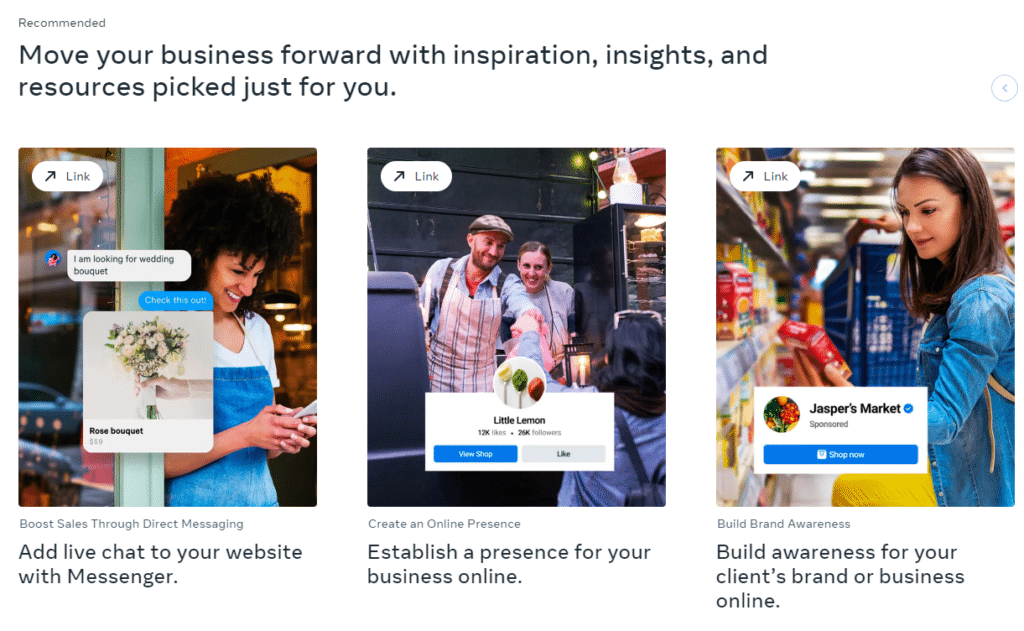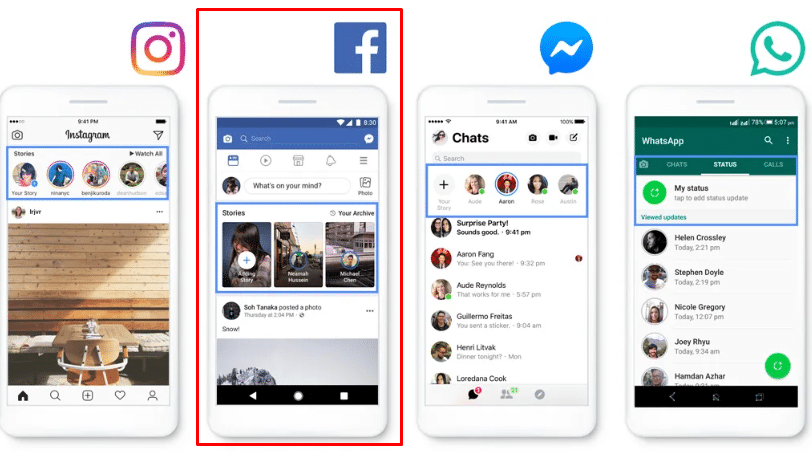For virtually every business, social media marketing is critical to attracting new customers and converting leads into sales. However, the social media landscape of today is much different than it was even a few years ago. More platforms are available, and each one has its pros and cons.
Even with new contenders in the field, one platform still reigns supreme: Facebook.
Businesses that tap into Facebook’s data can leverage the information for higher sales and better customer interactions. But how does Facebook marketing work, and how can you set your business up for success? Here’s how.
- Understanding Facebook Marketing
- Getting Started With Facebook Marketing
- Crafting a Facebook Marketing Strategy
- Leveraging Facebook Features for Business Promotion
- Measuring Success and Analyzing Performance on Facebook
- Bottom Line: How Facebook Marketing Can Help Your Business
Understanding Facebook Marketing
Because Facebook has been around since the dawn of the social media age, it has a much broader reach than other, newer platforms.
Also, Facebook’s ubiquity means everyone has heard of it, and most online users spend at least some time on the site regularly. For example, most Americans spend about 30 minutes on Facebook daily, putting it ahead of other apps like TikTok or Instagram (owned by Meta, Facebook’s parent company).
That said, looking at total usage statistics can be a bit misleading. Yes, billions of people are on Facebook worldwide, but that doesn’t mean each ad campaign will succeed. The more you understand how Facebook marketing works, the better you can leverage it for your brand.
Key considerations for Facebook Marketing
Before launching a new campaign, you should have realistic expectations of what may happen. Here are some of the top reasons to invest in Facebook marketing:
- Expansive Reach — Around 68 percent of US adults use Facebook, although not all of them do so every day. The largest demographic is adults between 25 and 34. Even when narrowing your focus based on age, gender, and other factors, Facebook has a much larger reach than other social sites.
- Decent Click-Through Rates — On average, a Facebook ad experiences a click-through rate (CTR) of 1.4 percent. For comparison, the average TikTok CTR is only 0.84 percent. Apparel and footwear have an even better rate of 2.06 percent on average.
- Targeted Impressions — Facebook has tons of data on its users, and it leverages that data to ensure everyone sees targeted ads based on their interests and current buying habits. So, every time an ad is displayed on Facebook, it’s more likely to capture the user’s attention.
The evolution of Facebook marketing
Over the last few years, Facebook and Meta have been scrutinized for violating privacy standards. However, while users are more wary of the platform harvesting their data, they still see Facebook as a valuable tool for connecting with friends and family. Despite the privacy hurdles, both Facebook and Instagram have an average marketing ROI of 29 percent.
Part of the reason why Facebook is still highly relevant is that it allows brands to personalize their content and ads. According to Katrina Lake, former CEO of Stitch Fix, “I firmly believe that personalized experiences with brands will most drive loyalty and relevance for customers in the future.”
AI is also changing the game for marketing professionals. Not only can AI help produce personalized content, but Facebook is using AI to improve its ad potential. This shift also ensures a more even playing field.
According to Facebook, “Ads with the highest bid don’t always win the auction. Ads with lower bids often win if our system predicts a person is more likely to respond to them, or finds that they’re higher quality.”
Getting Started With Facebook Marketing
Understanding the value of Facebook marketing is only the beginning. Next, you have to follow these steps to get your business onto the platform to start building an audience of prospects and customers. Once you have the foundation set, you can start expanding your outreach and tap into the potential of this site.
Setting up a Facebook business page
Before you can even create a business page, you must have a personal Facebook account. Multiple people can be added to a page, but everyone must be on Facebook to do so.
The process is very simple. Click on your profile photo to look at your accounts. From there, you can click on “Create New Profile or Page.” On the next menu, click on “Public Page.”
In the Create a Page tab, you can enter all the details about your business, including the name of the page (e.g., your business or brand), some brief information about your page, and photos to show off your company or products. You can also list other details like contact information, address, and hours of operation.
Optimizing the profile and page
When developing your business page, you need to determine its purpose.
Will the page be the first point of contact for new customers? Will it help drive traffic to your website? Is it a place where you can announce new products or sales?
Knowing what you want to get out of your business page enables you to optimize it effectively.
Here are some general tips and tricks to get more from your business page:
- Take a Mobile-First Approach — Most people interact with Facebook on mobile devices, so make sure your posts look good on a smaller screen. If possible, generate posts and manage the page from a smartphone so you can see what your followers see in real time.
- Engage With Users — Social media is a two-way street, so pay attention to and respond to comments or page posts. As you build an audience, you may have to invest in full-time moderation.
- Create Goal-Specific Content — If you’re using Facebook to drive traffic to your website, always include a link or URL in the post. If you’re trying to sell specific products, focus on the content surrounding those products.
- Caption All Videos — Most users (85 percent) watch videos on Facebook without sound. While you can have sound, you have to assume no one will hear it (on Facebook, at least). Captioning allows users to know what’s going on without turning the volume up.
Meta for Business
Facebook wants you to succeed because when you win, they do too. Meta for Business is your advertising and promotion dashboard where you can craft campaigns and find your perfect audience.
Even better, Meta for Business can help you get started with insights and action plans for your brand.
You can see what other companies are doing and discover what works best depending on your industry or the audience you hope to reach.
Finally, you can tap into all the products Meta owns, including Instagram, WhatsApp, and Messenger.

Crafting a Facebook Marketing Strategy
There are two methods of building an audience on Facebook: organically and via paid ads. While it’s always possible to build organic traffic, it can often take months or years to see substantial results. Instead, it’s better to invest in paid advertising and tap into Facebook’s potential.
However, before you spend any money, build the perfect strategy so you can start getting the best ROI immediately.
Identifying the target audience
Before you create a single ad or post, you should know who you’re trying to reach. Are you customers single fathers over 30? What about teenagers between 15 and 19 with disposable cash? Maybe you’re trying to target Millennials or Gen Z with specific interests.
Fortunately, Meta for Business allows you to pinpoint your audience precisely. You can input various metrics, including location-specific data (e.g., people in the greater Los Angeles area). From there, you can adjust your factors based on the response you get from your ads.
Creating engaging content
With social media, consistency is key. While you don’t have to post every day, you should post at least a few times per week. Your content should also vary between text, images, videos, and links to other pages (e.g., blog posts).
Best of all, you don’t have to write the content yourself. WriterAccess helps you tap into a vast pool of talented writers across the globe. These writers can craft Facebook posts, video scripts, email threads, landing pages, and blogs to help you reach and connect with your audience.

Utilizing Facebook ads
Now that Meta is using AI to refine its advertising strategy, businesses can benefit. As mentioned, having a large budget doesn’t always matter. Instead, Facebook pays attention to the relevance and value of the ad for the user.
What this means is that you want to get into your customer’s mindset when crafting an ad. You want to figure out what are they thinking when they see it. What would compel them to click on the link? Facebook can put your ad in the right place at the right time, but you have to create something to close the deal.
Leveraging Facebook Features for Business Promotion
While ads are an integral part of Facebook marketing, there are other ways to build an audience organically. Ideally, you can use a mixture of different strategies to boost your profile and connect with more customers. Here are some additional marketing opportunities within the platform.
Using Facebook groups and communities
Facebook groups are much more popular today than ever. Part of the appeal is that anyone can create a group about anything, no matter how niche or obscure. That said, as a business, you don’t want to create a group about your brand. Instead, you want to create groups centered around topics that your customers find valuable.
For example, if you sell health products, you can create a page dedicated to healthy eating or fitness. Then, you can create and post content around these topics and encourage other members to do the same.
The primary purpose of Facebook groups is to help you understand your audience better, not necessarily to sell to them directly. You can post questions and surveys and use that data to inform your next ad campaign.
Harnessing Facebook Live
For the uninitiated, Facebook Live is a feature where you can promote a live broadcast on your business page. While you’re live, users will get a notification, and they can participate by viewing, commenting, and reacting to the stream.
Live broadcasting is valuable for certain marketing purposes, such as hosting an event, launching a new product, or speaking with industry professionals. One of the best things about Facebook Live is that it’s a great way to boost engagement and build brand awareness. You can also promote live sessions ahead of time to encourage better turnout from your audience.
Exploring Facebook Stories
Video content is highly engaging, especially when compared to images or text. Facebook stories are designed to last for only 24 hours, although ad stories stay on the page indefinitely until they’re deleted.
Stories can help expand your audience and connect with new users, as well as highlight some of the best details about your brand. By using Stories Ads, you can keep video content pinned to your page, so new followers can discover more about your business before interacting with your sales team.
These videos can also help promote one-of-a-kind events and experiences, and because they’re available for 24 hours, they can reach a wider audience than a Facebook Live broadcast.

Measuring Success and Analyzing Performance on Facebook
After using Facebook marketing for a while, you want to make sure you’re getting a good return on your investment. However, which metrics are the most important, and what can you do if they’re not meeting expectations?
Key metrics to track
Before you can determine which metrics matter most to your marketing campaign, you have to know your overall goal. For example, if you’re trying to build brand awareness, you want to focus most on reach and engagement. However, if you’re trying to increase sales, you want to focus on conversion rates and the cost per click (CPC). Some common metrics to track include:
- Impressions — How many times an ad was viewed?
- Reach — How many people viewed your ads?
- Click-Through Rate — How many people clicked on an ad and went to the landing page?
- Cost Per Click (CPC) — Divide the total number of clicks by the amount you spent on a campaign. For example, if you got 1,000 clicks and spent $100, the CPC would be $.10.
- Shares — How many people shared an ad or post?
- Likes and Reactions — How many people reacted to a post or ad?
- Video Retention — How long do viewers watch your videos, and which videos have the longest retention?
- Traffic — Using Google Analytics, you can see where most of your site traffic originated, including from Facebook. Pay attention to how the traffic shifts when publishing new ads.
Tools for monitoring and analysis
Fortunately, Facebook offers free analytical tools within the Meta Business suite to help you determine whether your marketing is working. These tools give you a clear snapshot of your results.
For example, you can look at audience insights, which will break down your followers by age and gender, as well as the city and country in which they live. The “Results” tab also shows your reach, impressions, page visits and follows.
Alternatively, you can use third-party monitoring and analytics tools like Hootsuite, Sprout Social, or Brand24. The advantage of a third-party program is that you can monitor multiple social profiles at once and even schedule posts in advance. This way, you can plan your content calendar more effectively.
Strategies for optimization
Producing content is a great start, but you have to ensure it’s helping your business achieve its goals. Optimizing your Facebook marketing enables you to improve your ROI and generate more engagement and sales from each ad or post. Here are some recommended optimization tips:
- Install Facebook Pixel — This program monitors your website to see what visitors are doing and where they originated. Over time, Pixel can help you customize your content to target your customers more precisely.
- Clearly Define Your Audience — Knowing who you want to attract will tell you whether your marketing is working or not. Also, don’t just focus on specific demographics (e.g., age or gender). Instead, focus on targeting users who are most likely to make a purchase. Over time, you can see who is paying attention to your page and optimize your content accordingly.
- Leverage Facebook’s AI — Facebook has invested a lot of money in developing AI to improve the performance of Facebook ads. Using this automation allows you to get more from your ad spending without any guesswork. You can also have a mix of automated and manual campaigns to compare their outcomes.
Bottom Line: How Facebook Marketing Can Help Your Business
As you can see, Facebook marketing is a powerful tool that can boost your audience and strengthen your bottom line.
Don’t forget to analyze and adjust your marketing campaign based on results. Facebook’s analytical tools can help you refine your marketing message to convert more leads faster.
However, what matters most is content.
If you’re not making high-quality posts, videos, and blog articles, there’s no reason for users to pay attention to your page.
WriterAccess is offering a free two-week trial so you can tap into the massive talent pool of writers. Generating captivating content is easier when you can use experienced writers who bring valuable insight and creativity.







